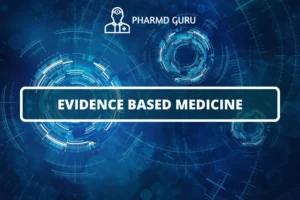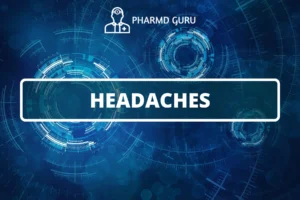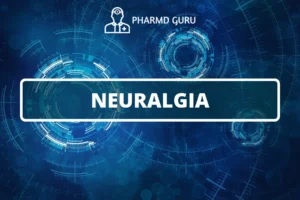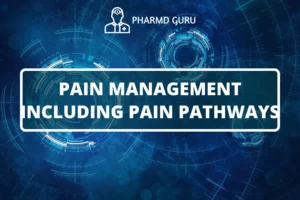Parkinsonism is a complex neurological disorder that affects movement and is characterized by symptoms such as tremors, rigidity, and bradykinesia (slowness of movement). It is primarily caused by the degeneration of dopamine-producing cells in the brain, particularly in a region called the substantia nigra. In this article, we will explore the etiopathogenesis of Parkinsonism, including its underlying mechanisms, and discuss the pharmacotherapy options used in its treatment.
SCROLL DOWN TO THE BOTTOM OF THIS PAGE FOR ACTUAL NOTES.
Table of Contents
- Introduction
- Understanding Parkinsonism
- Etiology of Parkinsonism
- Pathophysiology of Parkinsonism
- Clinical Features and Diagnosis
- Treatment Options
- Pharmacotherapy for Parkinsonism
- Non-Pharmacological Approaches
- Lifestyle Modifications
1. Introduction
Parkinsonism refers to a group of neurological disorders that share similar motor symptoms resembling Parkinson’s disease. It can be caused by various factors and conditions, leading to the disruption of normal motor function. Understanding the etiopathogenesis, or the underlying causes and mechanisms, of Parkinsonism is crucial for its diagnosis and management.
2. Understanding Parkinsonism
Parkinsonism is characterized by motor symptoms such as tremors, rigidity, bradykinesia, and postural instability. These symptoms result from the degeneration of dopamine-producing neurons in the substantia nigra, a region of the brain involved in motor control. The primary form of Parkinsonism is Parkinson’s disease, but there are also secondary forms caused by other factors.
3. Etiology of Parkinsonism
The etiology of Parkinsonism can be diverse and multifactorial. Some of the known causes and risk factors include:
- Age: Parkinsonism, particularly Parkinson’s disease, is more common in older adults, although it can occur at any age.
- Genetic factors: Certain genetic mutations and variations have been associated with an increased risk of developing Parkinsonism.
- Environmental factors: Exposure to certain toxins, such as pesticides or heavy metals, may contribute to the development of Parkinsonism.
- Drug-induced: Some medications, such as antipsychotics or certain antiemetics, can induce Parkinsonism-like symptoms.
- Neurodegenerative diseases: Parkinsonism can be a symptom of other neurodegenerative disorders, such as multiple system atrophy or progressive supranuclear palsy.
4. Pathophysiology of Parkinsonism
The pathophysiology of Parkinsonism involves the progressive loss of dopamine-producing neurons in the substantia nigra. This leads to a dopamine deficiency in the basal ganglia, a group of structures involved in motor control. The exact mechanisms underlying the degeneration of these neurons are not fully understood, but several key processes are involved:
- Alpha-synuclein accumulation: The abnormal accumulation of a protein called alpha-synuclein in Lewy bodies, which are abnormal protein aggregates, is a hallmark feature of Parkinsonism.
- Oxidative stress: Increased oxidative stress and impaired mitochondrial function have been implicated in the degeneration of dopamine neurons.
- Inflammation: Chronic inflammation and immune system dysregulation may play a role in the progression of Parkinsonism.
- Impaired protein clearance: Dysfunction in the cellular mechanisms responsible for clearing abnormal proteins and maintaining protein homeostasis can contribute to neuronal degeneration.
5. Clinical Features and Diagnosis
The clinical features of Parkinsonism can vary, but common symptoms include resting tremors (tremors that occur when muscles are at rest), rigidity (stiffness of muscles), bradykinesia (slowness of movement), and postural instability. Diagnosis is based on the presence of these motor symptoms, along with a detailed medical history and a thorough neurological examination. Additional tests, such as brain imaging or dopamine transporter imaging, may be conducted to support the diagnosis.
6. Treatment Options
While there is no cure for Parkinsonism, various treatment options are available to manage its symptoms and improve the quality of life for individuals with the condition. The treatment approach involves a combination of pharmacotherapy, non-pharmacological approaches, and lifestyle modifications.
7. Pharmacotherapy for Parkinsonism
Pharmacotherapy plays a central role in the management of Parkinsonism. The mainstay of treatment is the use of medications that aim to restore dopamine levels in the brain or enhance dopamine receptor activity. Commonly prescribed medications for Parkinsonism include:
- Levodopa: Levodopa is converted into dopamine in the brain and helps alleviate motor symptoms. It is often combined with a peripheral decarboxylase inhibitor to enhance its effectiveness.
- Dopamine agonists: These medications directly stimulate dopamine receptors in the brain.
- Monoamine oxidase-B inhibitors: These medications inhibit the breakdown of dopamine in the brain, prolonging its effects.
- Catechol-O-methyltransferase inhibitors: These medications inhibit an enzyme that breaks down dopamine, extending its duration of action.
The choice of medication depends on various factors, including the patient’s age, symptom severity, and the presence of other medical conditions. It is important to work closely with a healthcare professional to determine the most appropriate pharmacotherapy regimen and monitor for any potential side effects.
8. Non-Pharmacological Approaches
In addition to medication, non-pharmacological approaches can complement the treatment of Parkinsonism. These may include:
- Physical therapy: Physical exercises and rehabilitation programs can help improve mobility, balance, and muscle strength.
- Speech therapy: Speech and swallowing difficulties are common in Parkinsonism, and speech therapy can aid in improving communication and swallowing function.
- Occupational therapy: Occupational therapy focuses on improving daily living activities and fine motor skills.
- Deep brain stimulation (DBS): DBS involves the implantation of electrodes in specific brain regions to deliver electrical stimulation and alleviate symptoms. It is typically considered for individuals with advanced Parkinsonism who do not adequately respond to medication.
9. Lifestyle Modifications
Certain lifestyle modifications can also contribute to the management of Parkinsonism and overall well-being. These may include:
- Regular exercise: Engaging in regular physical activity can help improve mobility, flexibility, and overall fitness.
- Balanced diet: A well-balanced diet rich in fruits, vegetables, whole grains, and lean proteins can support general health.
- Adequate sleep: Getting sufficient restful sleep is important for overall health and may help manage symptoms.
- Stress management: Stress can worsen Parkinsonism symptoms, so implementing stress management techniques such as relaxation exercises or mindfulness can be beneficial.
ACTUAL NOTES:




